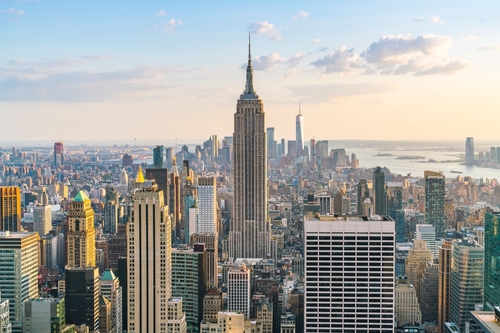After a new administration came into power in 2025, many cities and states have taken another look at their sanctuary policies. Some local governments have strengthened their support for immigrant communities, while others have scaled back or adjusted certain practices in response to federal guidance or state laws. These changes impact how local agencies coordinate with immigration authorities and how residents engage with public services.
Sanctuary cities are places where local officials limit their contributions to civil immigration enforcement. Specific rules vary depending on the location and can affect access to schools, clinics, or community support.
In this Remitly guide, we’ll look at key sanctuary city policy changes in 2025 and explore what might be upcoming in 2026. You’ll find information about which cities and states have recently changed their policies, how those changes may affect daily life, and where to find support.
What are sanctuary cities, and how do they work?
A sanctuary city (also referred to as a “welcoming city,” “safe city,” or “trust policy”) is a city, county, or state that limits cooperation with civil immigration enforcement. These policies are designed to focus on supporting public safety and community trust. This helps residents to feel safe accessing services such as schools, hospitals, and law enforcement.
How sanctuary policies differ across jurisdictions
Policies can apply at different levels of government:
- A sanctuary city may adopt local ordinances or mayoral orders.
- A sanctuary county often sets policies for county agencies, including the sheriff’s office and social service departments.
- A sanctuary state adopts rules that apply across the state.
While the scope varies, the underlying theme is the same: Local resources are focused on local responsibilities.
Many sanctuary policies include:
- Clear limits on when officers can ask about civil immigration status
- Requirements for judicial warrants before honoring immigration detainers
- Privacy rules for personal data
- Access to services regardless of immigration status
- Staff training to ensure policies are applied consistently
Many policies also state that city funds will not be used for general immigration enforcement.
There are important limits. Sanctuary policies don’t grant legal immigration status. They don’t block federal authorities from enforcing federal law or shield criminal conduct. Instead, they define the role of local government in civil immigration matters and prioritize safety, accessibility, fairness, and trust in local services.
Major policy changes in sanctuary cities in 2025
Throughout 2025, sanctuary city policies continued to evolve at the federal, state, and local levels. While there were no broad federal policy changes that required sanctuary jurisdictions to alter their practices, there were some shifts.
Federal policy trends
Federal guidance can influence how local agencies coordinate with immigration authorities. No new nationwide funding penalties have so far been implemented in 2025, but some grant programs have introduced updated reporting expectations. These updates mainly affect the way local governments document compliance rather than changing the policies themselves.
The new administration’s immigration enforcement priorities also influenced how frequently local agencies received detainer requests and what type of cases were prioritized. Some cities reported changes in federal outreach related to workplace enforcement, visa overstays, and border-related activity. However, local governments remained under no legal obligation to enforce civil immigration detainers.
State legislation
State policy continued to move in two distinct directions:
- States limiting sanctuary policies: Some states have introduced or advanced legislation that limits how much flexibility cities and counties have in setting sanctuary practices. This generally focuses on standardizing cooperation between local and state agencies.
- States protecting sanctuary frameworks: Other states took steps to protect or expand discretion at the local level. This included strengthening privacy protections and investing in language access.
Local policy updates
Many cities and counties reviewed their policies in 2025. Common updates included:
- Clarifying when detainers require a judicial warrant
- Tightening privacy guidelines for municipal ID programs and benefit portals
- Standardizing training to support status-neutral service delivery
- Expanding support for legal representation and “know your rights” education
- Publishing translated materials to make policies easier to understand
Federal appellate rulings from late 2024 continued to guide these updates, reaffirming two key points:
- Local governments are not required to enforce federal immigration detainers
- Local agencies maintain their right to establish status-neutral service policies.
These rulings provided extra clarity as cities and counties reviewed ordinances for 2025.
Which cities are maintaining sanctuary status in 2025?
Across the US, a country with a long history of immigration, more than 150 cities, counties, and states continue to maintain some form of sanctuary policy. These jurisdictions share a commitment to limiting local participation in civil immigration enforcement. In 2025, many have reaffirmed or updated their policies in response to state legislation, court rulings, and community needs.
West and Pacific region

California remains a sanctuary state, with large cities like San Francisco (population ~810,000) and Los Angeles (pop. ~3.8 million) continuing to uphold broad protections. San Francisco reaffirmed its “Due Process for All” ordinance in early 2025, expanding privacy rules for municipal ID holders. Los Angeles maintains status-neutral access to city services and multilingual community outreach programs.
In Washington, both Seattle (pop. ~750,000) and King County continue to support legal defense funds and language-access initiatives. Portland also reaffirmed its sanctuary stance following a statewide review of public safety coordination laws.
Southwest and Mountain West

Denver (pop. ~710,000) continues to operate under its Welcoming City framework, emphasizing clear police guidelines and equal access to municipal programs. Neighboring Santa Fe maintains its resolution on immigrant protection to clarify information-sharing limits. Tucson remains a de facto sanctuary city, focusing on access to services and legal navigation support within state constraints.
Midwest

Illinois remains one of the strongest pro-sanctuary states. Chicago (pop. ~2.7 million) strengthened its Welcoming City Ordinance in 2025, expanding protections for minors in public schools and residents using municipal services. Minneapolis (pop. ~425,000) and Saint Paul (pop. ~310,000) continue to train staff on civil status neutrality and community relations. Detroit (pop. ~630,000) maintains partnerships with nonprofits to promote small business inclusion and immigrant legal referrals.
Northeast

New York City (pop. ~8.4 million) continues to enforce one of the most detailed sanctuary frameworks in the country, limiting detainer cooperation without judicial warrants. Boston maintains its Trust Act commitments, ensuring residents can access public programs without immigration screening. Philadelphia (pop. ~1.6 million) remains steadfast, having recently introduced a “Safe Access” initiative to improve communication and trust between residents and city agencies.
South and Southeast

While formal sanctuary policies are less common in the South, several localities maintain community-based protections. Austin continues to provide immigrant legal aid within the limits of state preemption laws. New Orleans reaffirmed its policy limiting inquiries about immigration status during police stops.
Together, these cities represent more than 50 million residents, including millions of immigrants and mixed-status families. Their policies influence how local services operate, how law enforcement interacts with the public, and how communities build trust.
How sanctuary city changes affect residents
Policy updates can seem complex, but their effects show up in daily life. The areas where residents notice changes most often include public safety, access to services, privacy protections, legal representation, and economic participation.
Public safety and police interactions
When local rules limit when officers can ask about immigration status, residents are more likely to report crimes and cooperate with investigations. If a jurisdiction updates its rules, police departments usually publish community guidance and training updates. Residents can review those documents to understand what has changed and what has stayed the same.
Access to schools, clinics, and programs
Sanctuary frameworks typically confirm that residents can use schools, public clinics, libraries, and emergency services without immigration screening. In 2025, many cities enhanced language access through initiatives such as translation lines and multilingual websites. In places where state law narrows local policies, agencies will often update notices to explain what information is collected and why.
Privacy and data protection
Municipal ID programs and online service portals sometimes store sensitive information. In 2025, many cities reviewed how that information is stored, who can see it, and under what circumstances it can be shared. When privacy statements are updated, agencies generally post new versions and provide plain-language summaries to help residents stay informed.
Legal assistance and education
Civil immigration cases can be complex and time-sensitive. Many cities still support legal defense programs or partner with nonprofits to offer screening clinics and “know your rights” workshops. In 2025, some jurisdictions began exploring universal representation models. The availability of these programs varies and may evolve further in 2026.
Economic participation and financial planning
Clear policies help residents feel confident when applying for jobs, starting a business, and accessing financial services. For families supporting relatives abroad, predictable budgets and safe money transfers reduce stress and fees. Comparing exchange rates and transfer costs remains a practical way for households to stretch their income.
What to expect in 2026
Policy changes often unfold gradually, and it can take months to train staff, update documents, and share guidance with the community. Looking forward to 2026, most changes are likely to follow a familiar pattern: proposals, hearings, votes, implementation, and adjustment.
Early year: proposals and hearings. Legislative calendars and council agendas outline bills and ordinance revisions. These may address data privacy, police training, or local service access. Public hearings and feedback help shape the final language. During this stage, agencies often begin planning translation and outreach materials.
Mid-year: adoption and implementation. If changes pass, departments will train staff and publish materials that explain timelines and practical steps. City websites and signage may be updated in multiple languages.
Late year: evaluation and adjustments. Cities usually assess outcomes and refine procedures. This includes public safety outcomes and administrative workflows. If court decisions or state laws emerge during the year, local guidance may be revised. Nonprofits and community centers often host informational sessions to explain updates.
Staying informed
Here are some ways you can stay up-to-date on any changes in your area:
- Subscribe to city or county newsletters.
- Check your school district, health department, and police community liaison webpages for updates.
- Keep personal documents secure and easy to retrieve.
- For cross-border support, compare fees and exchange rates before sending funds.
Final thoughts
Sanctuary policies continue to evolve, and with changes at the federal, state, and local levels, it can feel complicated. Knowing where to find clear and up-to-date guidance for your area can help you feel more confident. Whether you’re new to a city or have been living there for years, staying informed will help you feel more prepared and supported.
FAQs
Can sanctuary cities lose federal funding in 2026?
Federal courts have generally ruled that the government cannot broadly cut funding to sanctuary jurisdictions. However, some public safety grants may include conditions related to cooperation. As of late 2025, no widespread federal funding cuts are in place, though debates continue in Congress.
What protections do sanctuary cities still offer immigrants?
Sanctuary policies limit local involvement in federal civil immigration enforcement. They often prevent detentions without a judicial warrant, protect personal data, and ensure equal access to city services. While these measures don’t grant immigration status, they help residents seek assistance and report crimes with greater confidence.
How can I find out if my city is a sanctuary city?
Check your city or county’s official website, which typically outlines public safety and inclusion policies. You can also visit trusted organizations, such as the National Immigration Law Center (NILC) or the Immigrant Legal Resource Center (ILRC), for updated sanctuary lists and resources.
What should I do if sanctuary policies change in my area?
Stay informed through city council announcements or public hearings. Local legal aid and immigrant rights groups can explain how changes affect access to services or cooperation with immigration authorities. Reliable information helps you prepare for any policy updates.
Are there alternatives to sanctuary cities for immigrant protection?
Yes. Some areas use terms like “welcoming city,” “safe access,” or “trust policy” to describe initiatives that provide similar safeguards. State-funded legal defense programs, language-access services, and nonprofit support networks also protect residents in many places where formal sanctuary policies don’t exist.

